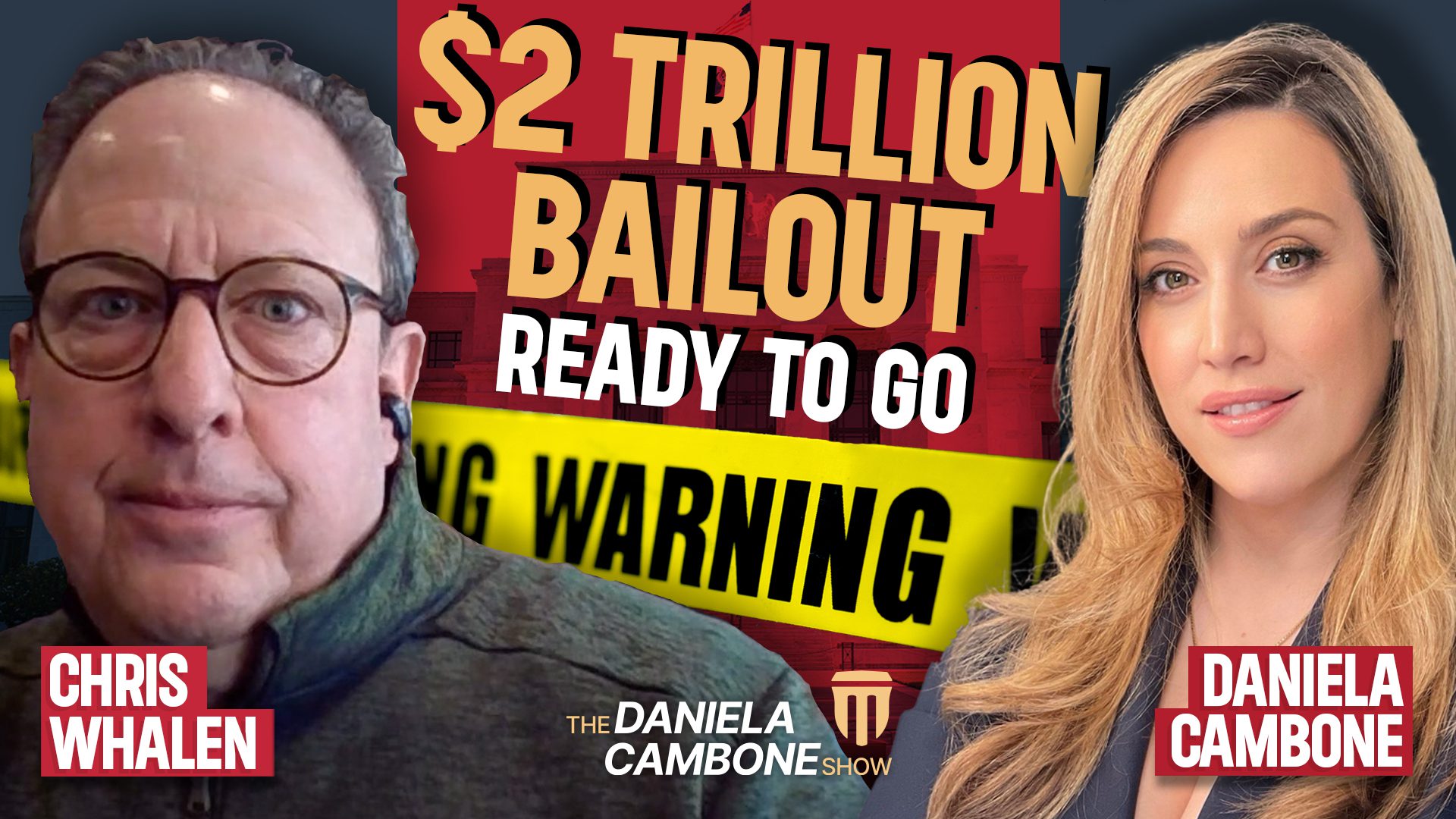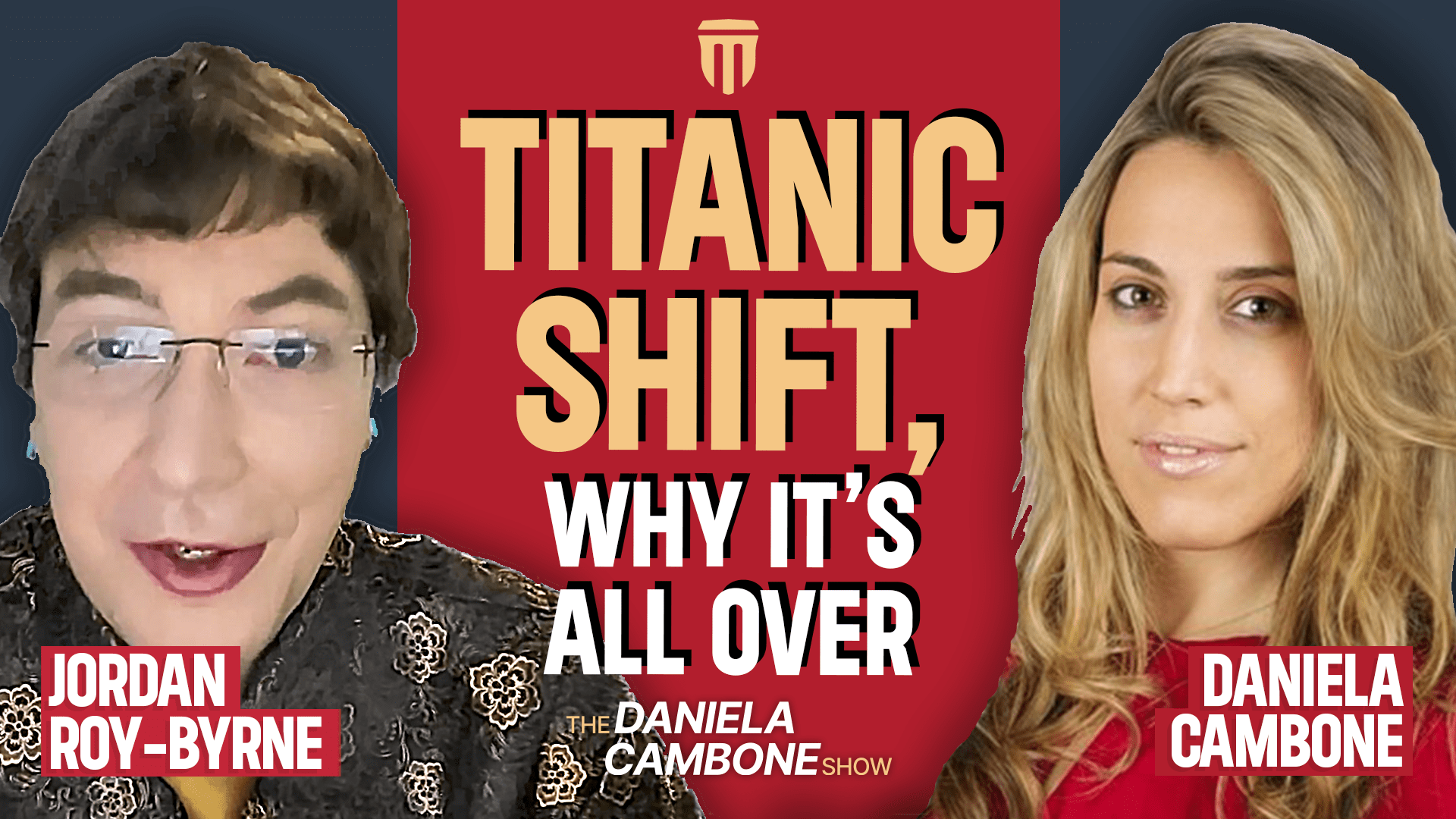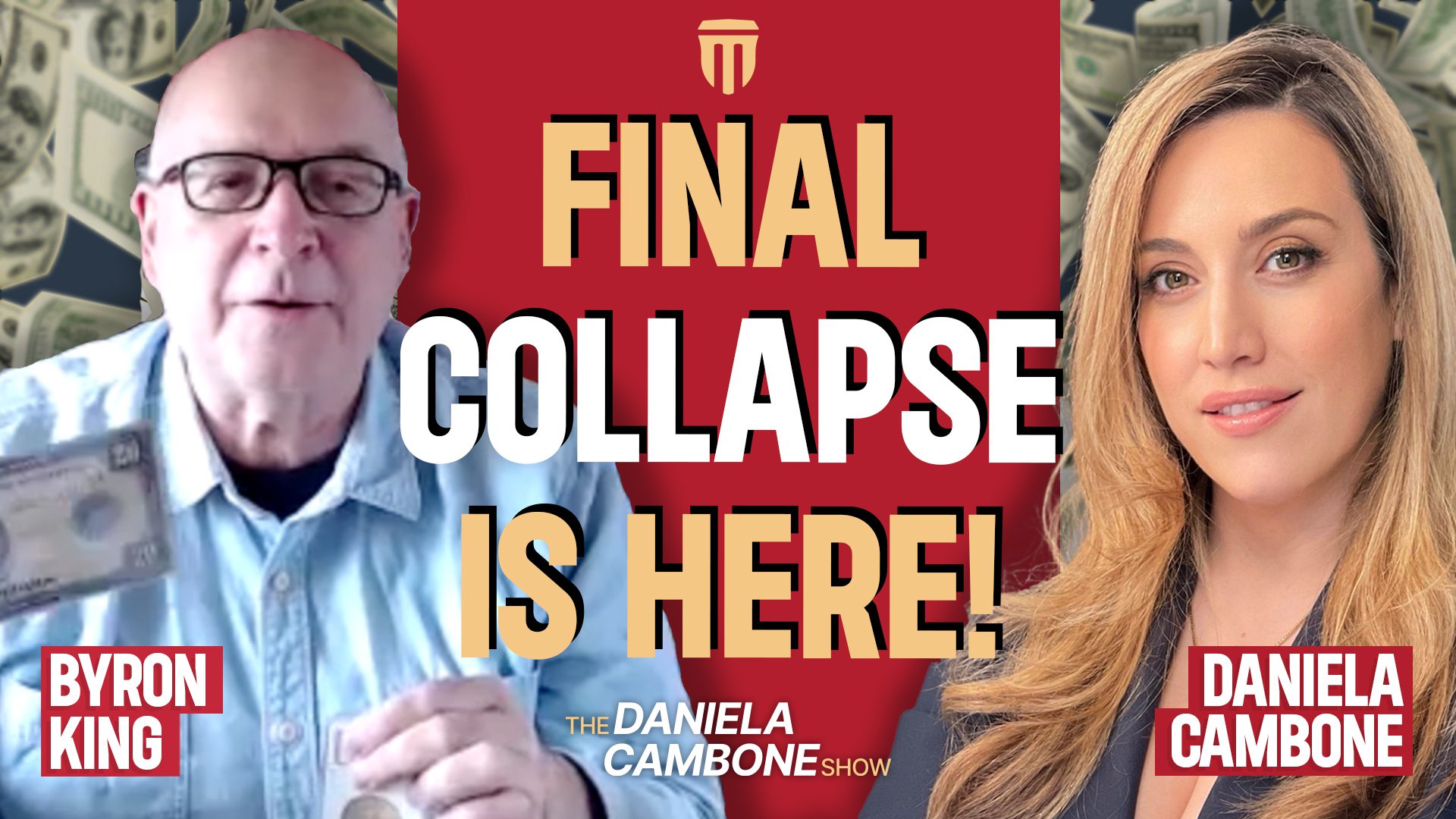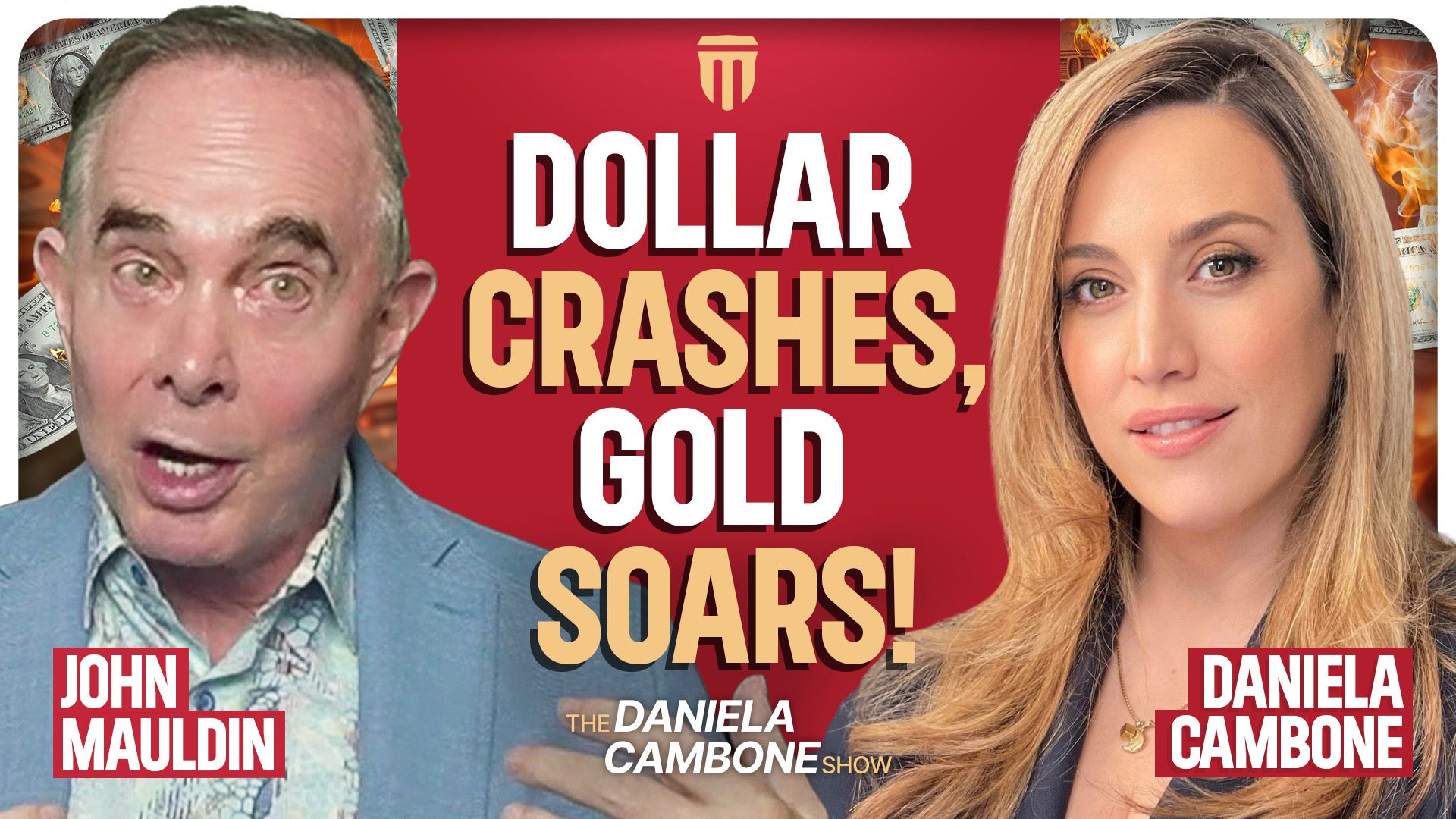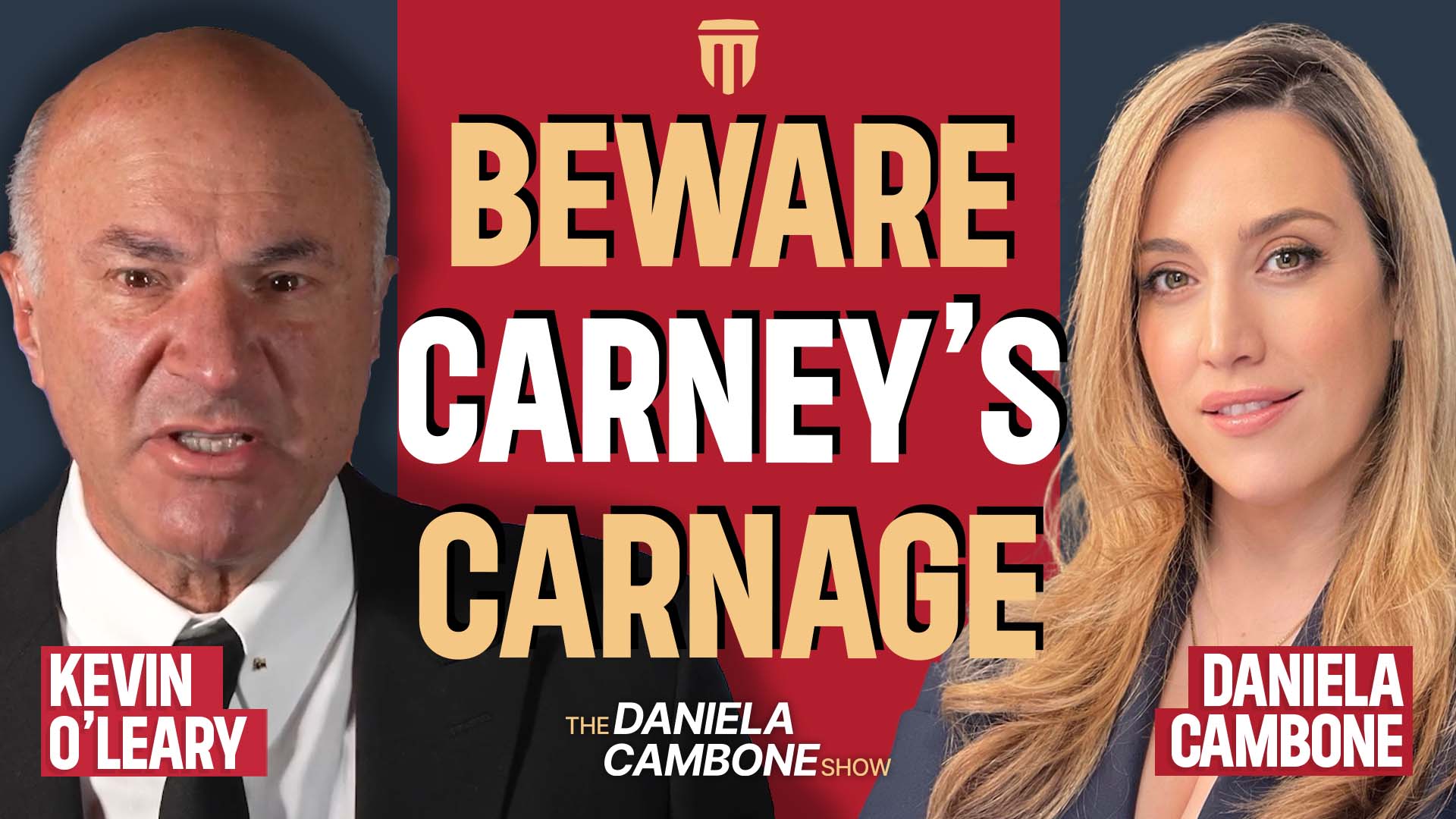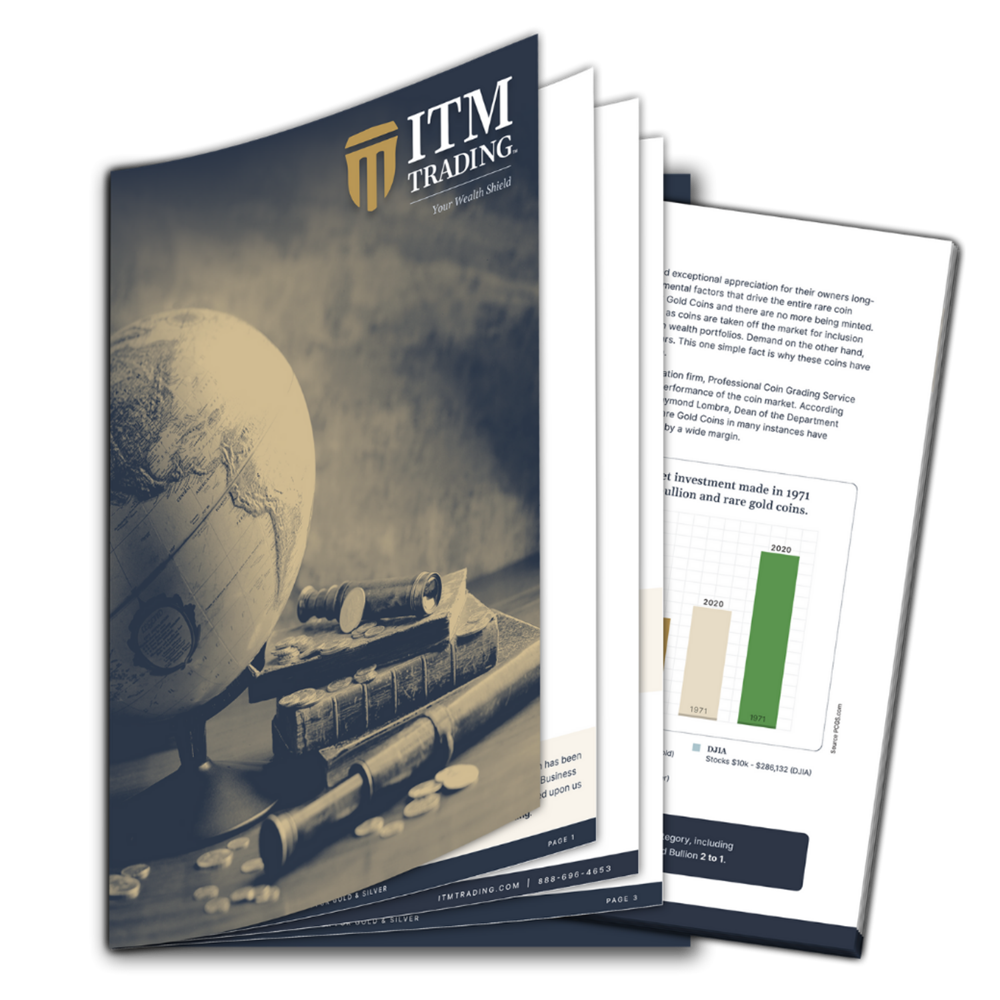The Fed’s Unprecedented Crisis: They Need to Keep Lying: Nomi Prins
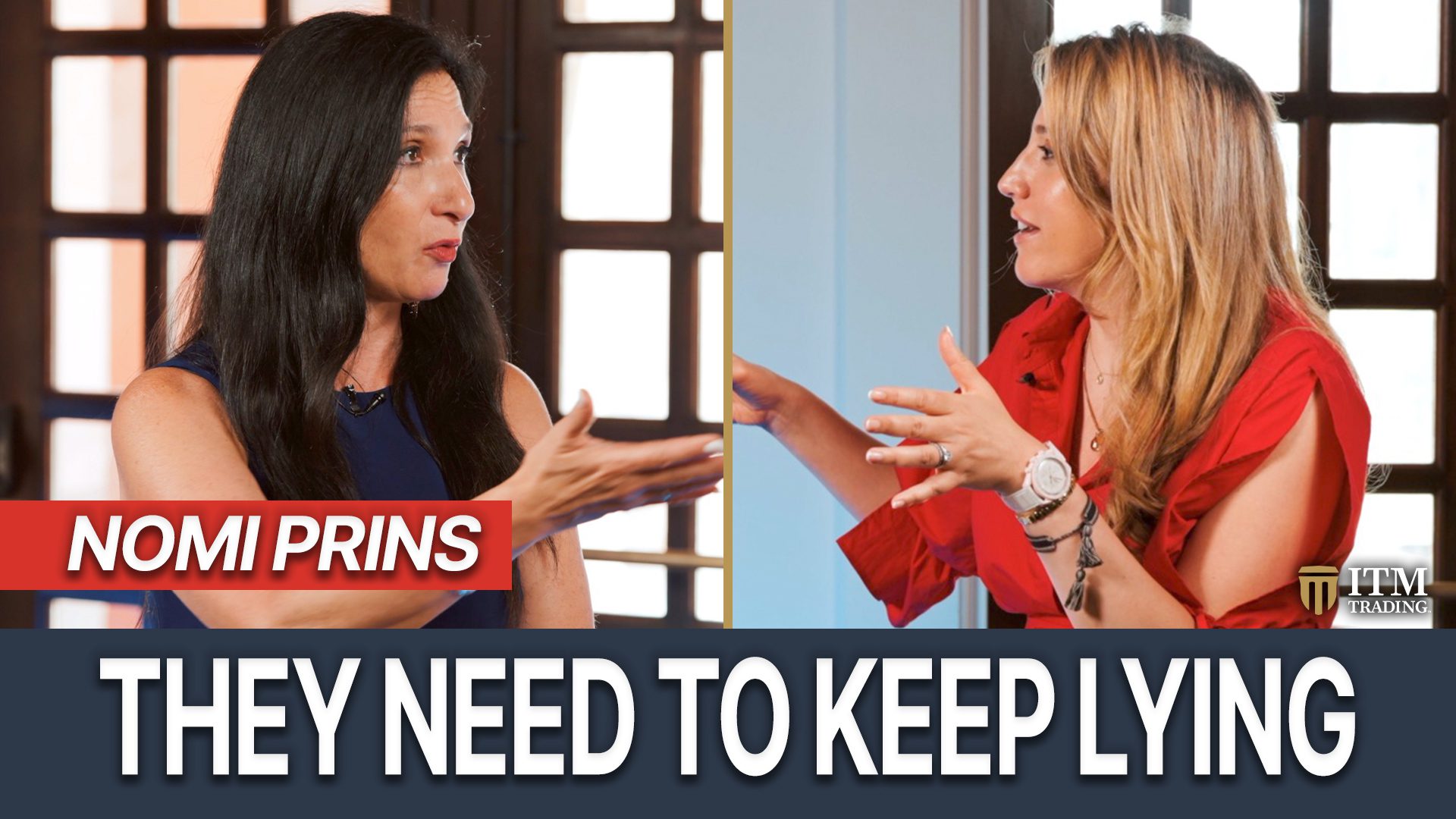
“I’m a firm believer in the Fed’s inability to do anything about inflation. It doesn’t mean they’re not raising rates, but the reality is that costs of everything are still rising,” says Nomi Prins, American economist, author, journalist, and public speaker. She tells Daniela Cambone that the Fed has lost its power to combat inflation. As the reality hits with expensive groceries and other necessities, the Fed’s claim is just “an illusion.” Nomi also expresses her concerns over the increasing U.S. debt. “Today, with almost $35 trillion of debt, we are looking at up to $2 trillion per year just in interest payments. Before we even turn the lights on for the U.S. economy, we’re doing an interest rate payment tab,” she states. Watch the interview to learn more about Prins’ views on the U.S. economy and her career leap from Wall Street to being a journalist.
CHAPTERS:
00:00 US debt
4:23 Dollar devaluation
6:00 Disconnect between Wall Street and Main Street
9:32 Gold
11:30 How much influence did the Fed have in the 90s?
12:54 Nomi’s career leap
16:08 Silver
TRANSCRIPT FROM VIDEO:
00:00
The first piece I ever wrote after I left Goldman Sachs was for Fortune magazine. And I was a co-writer because I had never written a piece for a magazine. It was funny because I went from a corner office on the 29th floor of 85 Broad Street, Goldman Sachs, running a department to getting coffee. What a humbling experience. Yes, to getting coffee for the senior writer. And it’s very interesting because I think in life, you get these opportunities to think about
00:28
a new path or possibly not think about it, but go there. And then you realize everything about it really just contributes to that new experience. I learned a lot from working with senior fortune writers and today I’m still friends with a lot of them, you know, 20 years later, and we’ve all developed in our different ways.
00:56
Hi, this is Daniela Cambone for the Daniela Cambone show on the road here in Boca Raton, Florida. Join now with Dr. Nomi Prins. She is a keynote speaker at Rick Ruhl’s Natural Resources Symposium. I always say it’s the event, one of the event of the year, a must attend. Nomi, so nice to meet you in person after so many interviews. How has the conference been for you thus far? You had a big announcement that we can share. Print sites.
01:25
A new substack? Yes. I have launched a new substack completely independent, unfiltered, me, and my thoughts in terms of boots on the ground analysis, which you know is something that I am very much in favor of and actually I don’t think we can do analysis or trend conversations or anything without getting out on the road. So that’s something new.
01:48
Bingo, yes. And I also just joined the board speaking of On the Road and Being a Natural Resources of Meteoric Resources, which is a Rare Earth Elements junior minor. They are based in Australia but with an amazing mine site in Brazil just three hours outside of Sao Paulo of an incredible and accessible find of every single rare earth, all 17 elements. Fantastic. Well, congratulations on that. I’m happy to speak with you because
02:16
I think Rick Rule really signed it up when he says he really invites people who are part of the belly of the beast. You are inside, you have those insider conversations that you can share with us and really break it down what’s really happening because many of us, we just have news headlines to go to. So that’s what I want to start with today is talking about…
02:36
the national debt and how bad is it really? Because we’re seeing the headlines, even the IMF coming out now saying, sounding the alarm bells, like the US really has to start focusing and warning about this. And yet on the presidential election stage, and by the way, we didn’t plan to dress in these colors, there is no mention of the debt yet, right? And some can argue maybe it’s early on and whatnot. But I bring this up because I had Joel Lippman, another keynote speaker on saying, he’s not worried about it. 34 trillion taxes could pay it off if we really wanted to. But…
03:05
Are you concerned about what you’re seeing with the debt? I’m concerned about our debt for one major reason, which is that if we are paying money to service debt, we are not using that money to invest in our growth. And so though we can continue to basically amass debt, I mean, let’s face it, we are the United States of America, countries will be fine with effectively lending to us and us being indebted to them through our treasury bills and treasury bonds and treasury notes.
03:34
But the reality is the more debt we have, the less we have left over to spend. Today, with the $34, almost $35 trillion of debt, we are looking at a tab of up to $2 trillion per year of just interest payments on that debt. And that means before we even turn the lights on, so I’m going to pay for the lights of the United States economic growth or economy, before we even get to that point, we’re doing an interest rate payment tab.
04:02
And that’s where I get concerned. It’s not that we can’t continue to print money. It’s not that the Fed can’t continue if there’s a crisis to buy some of these bonds and be that buyer of last resort. It is currently the largest holder of treasury debt on the planet. It’s just that we can’t do anything else until we pay it. The interest, not even the debt. Rick Rule brought up that this time reminds him of post-Vietnam, where there was so much debt and the only way to get out.
04:31
and what we got out was devaluing the dollar. Now, other slides today show that the US dollar has devalued over 50% since 2020. Is that gonna be the only way out? That’s one way, because by definition, if we are paying off debt before we grow our economy, we’re devaluing our own value, and that devalues our currency, that devalues…
04:53
how much the dollar is really buying because they’re going to be paying also to other countries to buy things that we could potentially invest in and grow here because we’re not because we’re paying off our interest payments first. So there is a circle of debt-related activity that happens because we have such an enormous tab. And one of the things that I’m concerned about is that, and you’re right, it’s a really good point. This isn’t something that is brought up in not even just debates, even by the media that is…
05:22
digesting or analyzing those debates, it’s not being talked about. And it’s also not even just national debt. Today in our country, household debt is $17.3 trillion. That is half of national debt. You put those two things together and you’re looking at an immense amount of debt for the average person and their portion of our national debt.
05:47
And all of that really beats down on people’s ability to invest in themselves, in their small businesses, in their families, in their future. And that just rides all the way up to the national level. I’m so happy you brought that up because let’s look at Fed Powell’s recent comments saying he’s happy with what he’s seeing on the inflation side, that the fight’s not over, but he thinks that we’re getting there. But to your point, credit card debt at records we’ve never seen, people using, taking out.
06:14
loans, debt to take their kids to Disneyland, right? Still struggling at the grocery store, people arguing that inflation hasn’t come down. So let’s talk about this disconnect from what Fed Powell is saying to what the average American is actually living. Yeah, I’m so glad you brought that up because I’m a firm believer in the Fed’s inability to do anything about inflation.
06:39
It doesn’t mean they’re not raising rates. It doesn’t mean they don’t talk about it. It doesn’t mean that Powell hasn’t positioned himself and the Fed as some sort of superhero fighting inflation, being able to beat it, and it’s an us versus inflation thing. The reality is two things have happened. One, as you have said, regardless of what the Fed has done, regardless of the pace of inflation coming down, the situation is that costs of everything are still rising. And so the relationship of what people make.
07:09
and what people have to pay for their groceries, for their insurance, for their kids’ transportation, for whatever it is they have to pay for has only increased relative to their average amount of money that they’re taking in. That’s inflationary. So when the Fed comes in and says, well, we can fight it, we’ve gotten it down to 2.6% from 3.4, 5.6, et cetera, that’s because of really a little bit of an illusion.
07:36
Because we did have a very high inflation happen after COVID, right? We had supply chains basically taken out of commission, then things came back, and then anyone who was supplying had to basically pay extra money to get stuff going, and then companies were charging more to get things out the door, and items were increasing and so forth. That was one level of very high inflation. That happened. The Fed didn’t notice it, but once the Fed noticed it after it finished calling it transitionary, it started to raise rates to fight it.
08:04
And the idea is if we make money more expensive, people will basically borrow less, so therefore they will buy less, so therefore prices will come down because demand will be less. None of that actually happened by virtue of what we have just said now, that the debt has only skyrocketed. It’s just that people are paying more for their debt now than they were before rates rose. So it’s incidental that the pace of inflation, the pace has come down.
08:32
It’s not really because the Fed raised rates. It’s really because that was something that was in play anyway after a large shock. What the Fed has done though, is it’s been able to perpetuate this illusion that it can do something about inflation. So every time, and you know I talk about it, we still talk about it, but every time there’s an FOMC meeting, what did Powell say, what is it gonna do? It’s not really 2% yet, we need to get it down to 2%.
08:59
All of that stuff is incidental to the fact that things still cost people more and that there is still other money in the economy that has been on the sidelines by people or companies that have amassed it that is still going into the market. So that hasn’t stopped either. So we’re just basically looking at sort of a narrative that the Fed’s been able to perpetuate and that the media has really locked onto it. They can do anything about inflation.
09:26
And I can’t. It’s just one big illusion. It is. That’s being fed. You know, I never really asked you this, but I mean, anyone who looks at your corporate American, your past career, right? I mean, Goldman Sachs, senior analysts, the Lehman Brothers, the Bear Stearns. I mean, you’ve worked, you know, really, like Rick said, you were part of the belly of the beast, right? I mean, was, I’m just curious to know how gold was seen from these.
09:56
because we often hear, well, Wall Street hates gold, and I bring this up because we’re at our Precious Metals Conference, but what was the inner feeling about gold when you worked there? That’s a really interesting question. When I did work on Wall Street, which was through the 90s and part of the 2000s, gold wasn’t really a conversation piece, right? The only part of the natural resource space that was really part of the real trading community, especially at Goldman,
10:26
in the commodity space was really oil, natural gas, the more transitional natural resources. Gold wasn’t really a thing. Today it’s a little bit different because today what we’re seeing in gold is a massive movement from central banks and also increasingly from retail to expand their investment horizons into gold. So therefore, Wall Street is always looking for the quick buck. So if you can run a gold ETF now.
10:56
some Wall Street firms are doing, if you’re BlackRock, if you’re any of the sort of major funds that are running ETFs, you will notice that there is more of a propensity to invest in precious metals. And so there, because of that, has been more of a movement. It wasn’t so much during the time when I was there, because also central banks weren’t buying gold back then. We didn’t have a record year like we had in 2022, an almost record 2023. We’re on pace for another record already from the data this first quarter of 2024 for 2024.
11:26
And how influenced were they, and when I say like if we take a Goldman Sachs, by what the Fed was doing at the time? So that is a really interesting question because very influenced. So there was a time when I was working at Lehman, this was in the early 90s, and I was spending a lot of time with central banks around the world, mostly because they were buying US Treasury debt. That was right when they weren’t buying gold. They were buying a lot more debt, China, Japan, and so forth. But every time…
11:55
There was a Fed number or basically Alan Greenspan or whoever was going to be speaking. Everyone kind of stopped what they were doing. There wasn’t a lot of channels around. There wasn’t a lot of sort of internet, different sort of independent media around, but we would just kind of stop and listen, or it would come over the ticker and be like, all right, what does that mean? Mostly for treasuries and rights, because that was the business at that point that I was involved in with Lehman Brothers. So it was very much a watch, what is he saying and what does he really mean?
12:24
And what does it mean for treasury debt? What does it mean for rates? Are they gonna rally? What does it mean for the futures market? How is that gonna relate to the bond market? A lot of that in the space. Is it hard to, was it hard to make the leap? I mean, here you are at the top of corporate America, right? To leave it and then start your own thing? I mean, now you’re basically doing the complete opposite of what you were doing, right? Right.
12:52
What I have found over time is that there, what I actually believed would happen when I quit, which was that there is an independence that you get by not being attached to certainly a big Wall Street bank. The last bank I was at, I was a manager director at Goldman Sachs. I ran two departments there. There’s definitely an inbred sort of connection that you have to have to sort of corporate think, right? I mean, what are you supposed to say? What can’t you say? You can’t talk.
13:20
And it was different when I left. It was early 2000s. It was right before the financial crisis. And at the time, there wasn’t so much sort of a talking head thing going on from inside of Wall Street. It was very much a don’t talk to the press kind of thing. Or if you do, it has to go through communications and all these different layers. Now it’s a little bit different. Now there’s an understood sort of need to communicate, still maybe on message, but more so than there was back then. But either way, there is an independence that comes from being independent.
13:50
and putting these things together. And I think for me, there was a lot of negativity on Wall Street. This was sort of around the World Trade Center situation. This was around a time where Wall Street was really embarking on a lot of fraud with companies like Enron, Worldcom. We had a whole bunch of sort of perfect bankers and fraud that was going on. And just the general atmosphere was very sort of toxic on that level.
14:19
So leaving that behind wasn’t really a hardship. Now, you leave the money behind, right? And I did leave a lot of money on the table and it’s something that my mom, I think, never really understood. Or recovered from. She’s like, why would you do that? What’s wrong with you? Like any parent would. Yeah, you wanna do journalism, so you wanna go from making like this much an hour and making this or nothing. But that’s what happened. And actually the first piece I ever wrote,
14:48
after I left Goldman Sachs was for Fortune magazine. And I was a co-writer because I had never written a piece for a magazine. And it was funny because I went from a corner office on the 29th floor of 85 Broad Street, Goldman Sachs, running a department to getting coffee. What a humbling experience. Yes, to getting coffee for the senior writer. And it’s very interesting because I think in life, you get these opportunities to think about
15:15
a new path or possibly not think about it but go there. And then you realize everything about it really just contributes to that new experience. I learned a lot from working with senior fortune writers and today I’m still friends with a lot of them, you know 20 years later and we’ve all developed in our different ways. But you develop just independent ways of communicating. Now of course we’ve got.
15:39
We’ve got Substacks, which I just launched. There’s seven books in it. Yeah, many books. That leap of faith worked out for you, obviously, right? You’re an internationally acclaimed speaker. Your opinion is valued by the greatest minds in this sector. So thank you for answering that because I always wondered, because like I said, here you were at the top of corporate America and to leave it behind takes a lot of guts. Final point I wanted to bring up that I love. During your talk, you obviously were at a precious metals summit, as I said.
16:09
You spoke silver. We don’t really hear much about silver, but you were very bullish silver saying, it’s often overlooked, but it shouldn’t be. Make the case. And I know you have a sub stacked out on it, so you can read it, but just some bullet points for us. Yeah, so first of all, obviously gold, we’ve talked about gold. A lot of gold is a very precious, precious metal. It is very much coveted by central banks, particularly diversifying, as they’ll continue to do from dollars.
16:36
But silver, which has been sort of the second cousin of gold, has really been appreciating at almost twice the rate of gold this year under sort of the radar. So gold has appreciated about 24% over the last year and silver has appreciated by upwards of 49%. So there’s been a definite difference in that velocity. In the past, there also, it also works the other way, which is there is a volatility to silver and there has been in the past.
17:04
which makes it kind of scarier than gold. But what’s different now, aside from the fact that central banks who are buying gold, many of them are allowed to buy silver. And I think this will be something we will see. I do not know when, but there are central banks that, let’s not forget, we used to have a silver standard in the United States before we really knew about the gold standard. This has been part of the currency fabric of the world as well, just not as coveted.
17:30
or as talked about or as integrated as gold was. So there is that possibility, but also silver has a lot of use value. And as the world is and will continue to really expand the energy transformation and also make it more economic and more efficient, silver is a great conductor of electricity. It’s a great means of connecting.
17:53
new energy development, new energy infrastructure. And so there’s a use value that it has that isn’t going to go away, and that’s a global use value. So if you look at the precious metal currency, sort of wealth preservation component of it, you look at the fact that it’s $32, $31, $32 instead of $2400, it is also more accessible potentially as an investment. If you want to buy an ounce of silver as a regular normal human being, you can do that.
18:23
And it’s interesting because I over the years, probably because I left Wall Street, every year on the birthdays of my niece and my two nephews, I buy each of them like the new silver dollars, like a one ounce silver dollar from the US Mint. It comes in a little box. It’s got a little certificate. It’s accredited. And it’s cheap. But over time…
18:46
Unlike the devaluation of bonds and the devaluation of sort of fiat currency, the dollar, these things actually have appreciated over time. So my niece has this little stockpile of silver coins. And it’s just cool. It’s a way to talk about physical assets, precious assets in a way that is affordable. Exactly. I was going to say more than the…
19:07
The actual gift, I think it’s the fact that it’s a learning tool. So I do the same with my children. I mean, they’re only four and don’t understand yet. But one day I feel like this will be my entryway, like how I can actually educate them on real money. So wow, this was a lot of fun. Dr. Nomi Prins, bestselling author, her latest book, Collusion, get that, and your latest adventure here with the Substack.
19:32
Print sites. Yes. Yes. So be sure to check that out. Thank you so much. Thank you. It was such a pleasure to meet you. Yes. So good to meet you in person. Finally. And thank you all for watching. We’ll have more great content headed your way. So be sure to continue to watch the Daniela Cambone show here on ITM Trading and sign up at danielacambone.com. We’ll see you soon.
SOURCES:
https://prinsights.substack.com/


